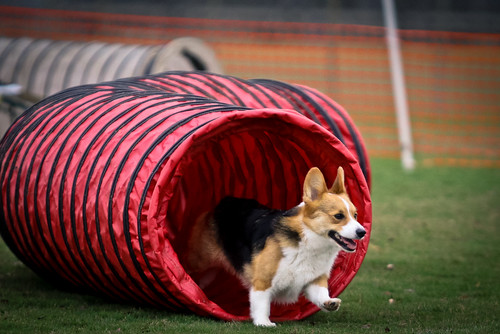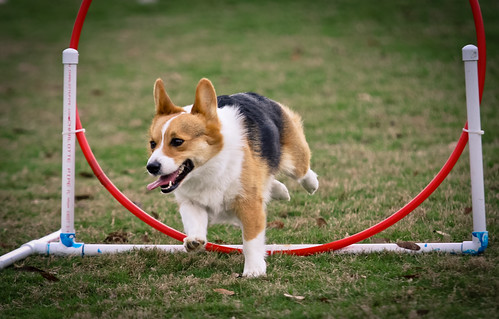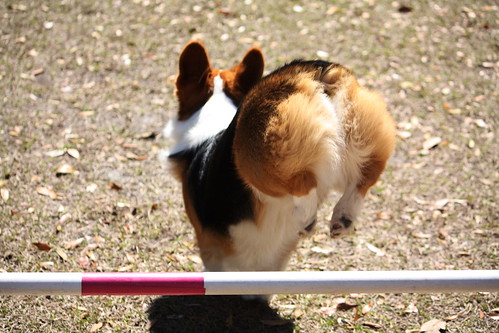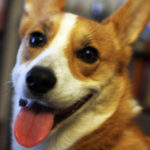Thanks again to guest blogger Katie Ringo for her two-part series on Agility. If you missed the first post, click HERE to view and enjoy!

How do I get started with training? You want to look for a local club that has agility training classes for beginner dogs and handlers. Often you can do a Google search for trainers in your local area or you can go to a local agility trial and ask around. Watch the trainers handle their own dogs in competition to get an idea of the type of training they do. Ask if they use positive reinforcement or punishment in their training. Agility training should always be very positive, encouraging and work at the dogs pace. Ask if you can sit in on a group class to observe the trainer and some of her clients. A good training facility will always allow you to do this.
Your trainer is very important as they can make or break your agility training experience. You want to work with an encouraging, upbeat trainer that always has suggestions when things just don’t go the right way the first few times. The trainer should be able to work with all different dog breed types and human handlers of different abilities. Some trainers have biases towards certain dog breeds doing agility or don’t know how to motivate different breeds that aren’t typically seen in agility. Some trainers discourage other breeds than herding type dogs from participating altogether. I do suggest not participating in their particular training program if this is the case as you may find it really frustrating.
What can I expect from my first agility class? Basic training on the obstacles should be covered and broken down into several different classes. The dog must learn how to safely execute each obstacle to prevent injury. Most training classes have you practice obstacles on leash to prevent the dogs from running off or playing with each other. As you progress in your training you will gradually start to drop the leash for a few obstacles and then eventually remove the leash and collar altogether for the upper level training.
Once the dog has the basics of each obstacle down and can perform them safely then the real work begins. Your instructor will have you start to sequence obstacles where you do 2-3 obstacles in a row. You will build on this until you and your dog are running full courses (18-20 obstacles) off leash.
What most people don’t often realize is that the human will be the one needing most of the training once the dog learns the obstacles. The difficulty of doing dog agility lies in the humans ability to signal the dog where to go next and when to change direction. Most of the mistakes the dogs make in agility are because the handler did something wrong. Handlers train for years with their dogs to be ready for competition.

I just want to do this for fun, should I still try agility out? Yes! You will be amazed to see how happy your dog can be when you are both doing something fun together. It is great exercise for both of you, you are working towards a fun goal and the dog is getting rewarded a lot during training. My dogs know when it is time to go to agility class and they are all clamoring to get into the car. They love it! Your dog will also learn some handy tricks to show off during your dinner parties too!
I really want to compete – what do I need to know? Training for competition can take a lot of time. I would suggest taking several classes before deciding whether or not to pursue competition training. Not all dogs enjoy agility, it is just a simple fact. Some dogs would prefer just lounging on the couch rather than running around an agility field and that is okay. If you’ve taken several classes and your dog really enjoys it then talk to your trainer about your goals for competition.
- Where to Compete – There are several different agility “clubs” that run competitions all over the world. Someone created a handy website to find local agility events in your area – AgilityEvents.net. You can search and find events for all different venues. To name a few: American Kennel Club (AKC), Canine Performance Events (CPE), North American Dog Agility Council (NADAC), Teacup Dog Agiliy Association (TDAA), United States Dog Agility Association (USDAA).
Keep in mind, each club runs their events a little different. For example, NADAC does not use a teeter totter in any of its competitions. TDAA only allows dogs under 16″ in height at the shoulder to compete. CPE doesn’t use a teeter totter or weave poles in its level 1 competition classes. Each venue has positives and negatives about competing with them. Your local area might not have trials with a particular club very often but might have lots of trials with another club so that is something to keep in mind too. If you are working towards a title it is easier to get points towards it if you can go to a competition at least once a month. Some venues are friendlier for new dogs and handlers than others (CPE and NADAC seem to be great for beginners).
Your trainer should be able to help you navigate the ins and outs of entering a competition and what to do once you get there. Some trainers even offer help if they are at the same trial that way you can ask questions and get support since there isn’t a manual on what to do at an agility trial. Packing is a huge consideration and I even wrote a recent blog post on just some of the things you have to pack with you when you travel for a local trial.
- Competitions Cost Money – Running an agility trial isn’t cheap. The club has to purchase and use their own equipment, sometimes they have to rent the facility for the competition too and then they also have to provide ribbons along with all the work of actually reporting the results to the national club. These costs are passed on to you the agility enthusiast. A weekend trial can cost $150-$250 depending on the venue and that is per dog. If you don’t want to do every single run the whole weekend, a single run in one class can be anywhere from $10-12, more if you are competing in AKC. Also keep in mind, there isn’t prize money in agility competition unless you are at the very top of the National level. Trialing can become expensive depending on how often you do it. You may need to budget for these costs and choose trials that you feel are worth spending money on.
- Remaining Positive During Competition – Set a goal at each competition of one or two things you want to work on (more distance, better start-line stay, 5-6 obstacles in a row without an issue) so that you come away feeling accomplished. Your dog should be given lots of positive reinforcement at competition because the venues can be crowded and stressful at times. Praise your dog for all sorts of good things they do, even if they are things they always get right in practice. A new dog that performs well in a strange place without their normal agility classmates nearby is a very rare thing indeed so make sure you are encouraging. Clubs discourage handlers from yelling, hitting, leash jerking, and severely reprimanding their dog on competition grounds. You can get ejected from the grounds for doing such a thing and rightly so. Competition is supposed to be a fun place where you can have fun with your dog and show off all your hard work. Often quoted at trials I attend, “If only one of you is out there having fun it better be the dog!” – I remind myself of this every time I go out to run.
Agility is a great sport for dogs to compete in and I believe it builds a stronger bond between dog and owner. More corgis should be involved in agility. Watching a corgi bunny-butt weave is just about the cutest thing in the world.





